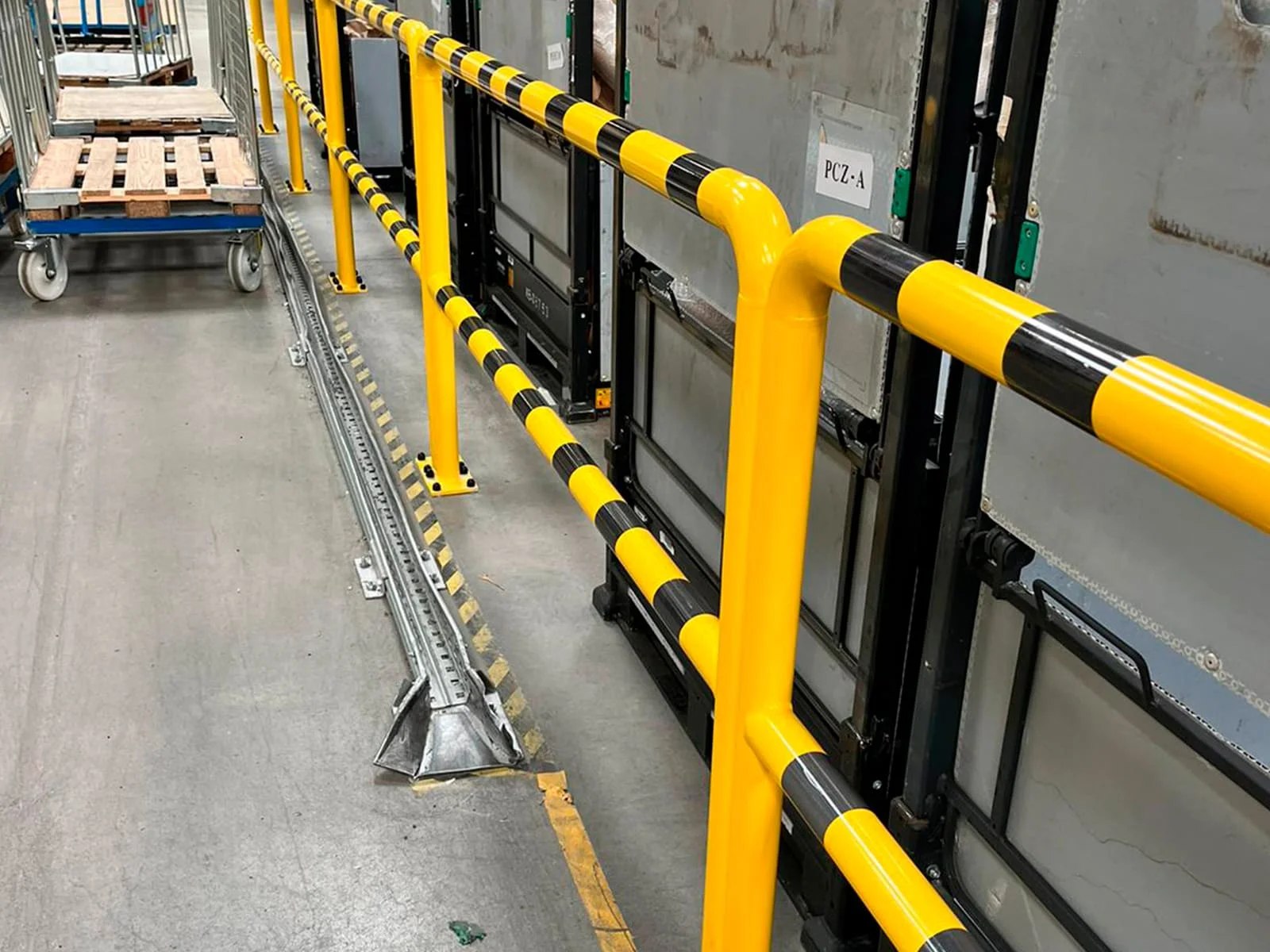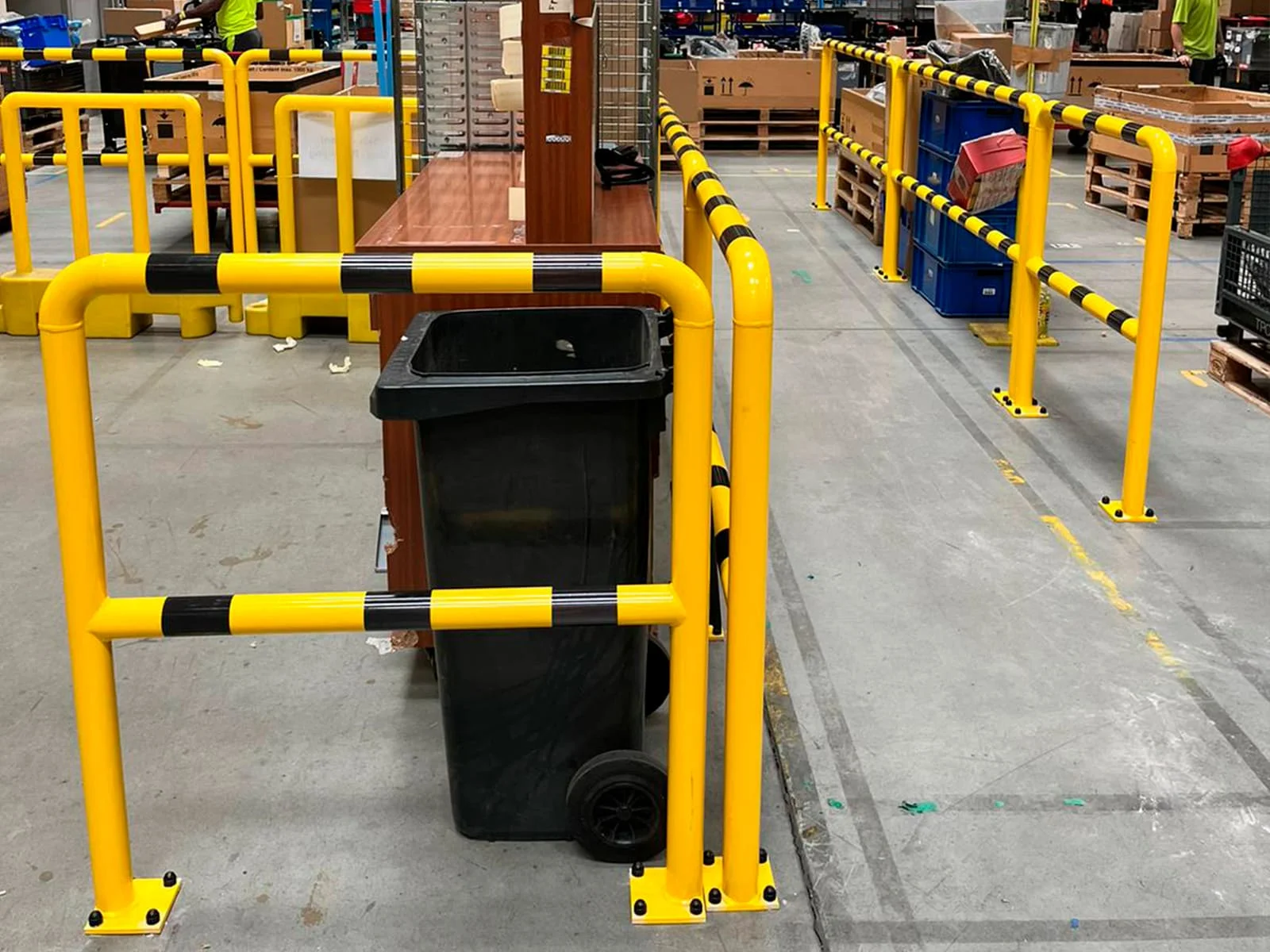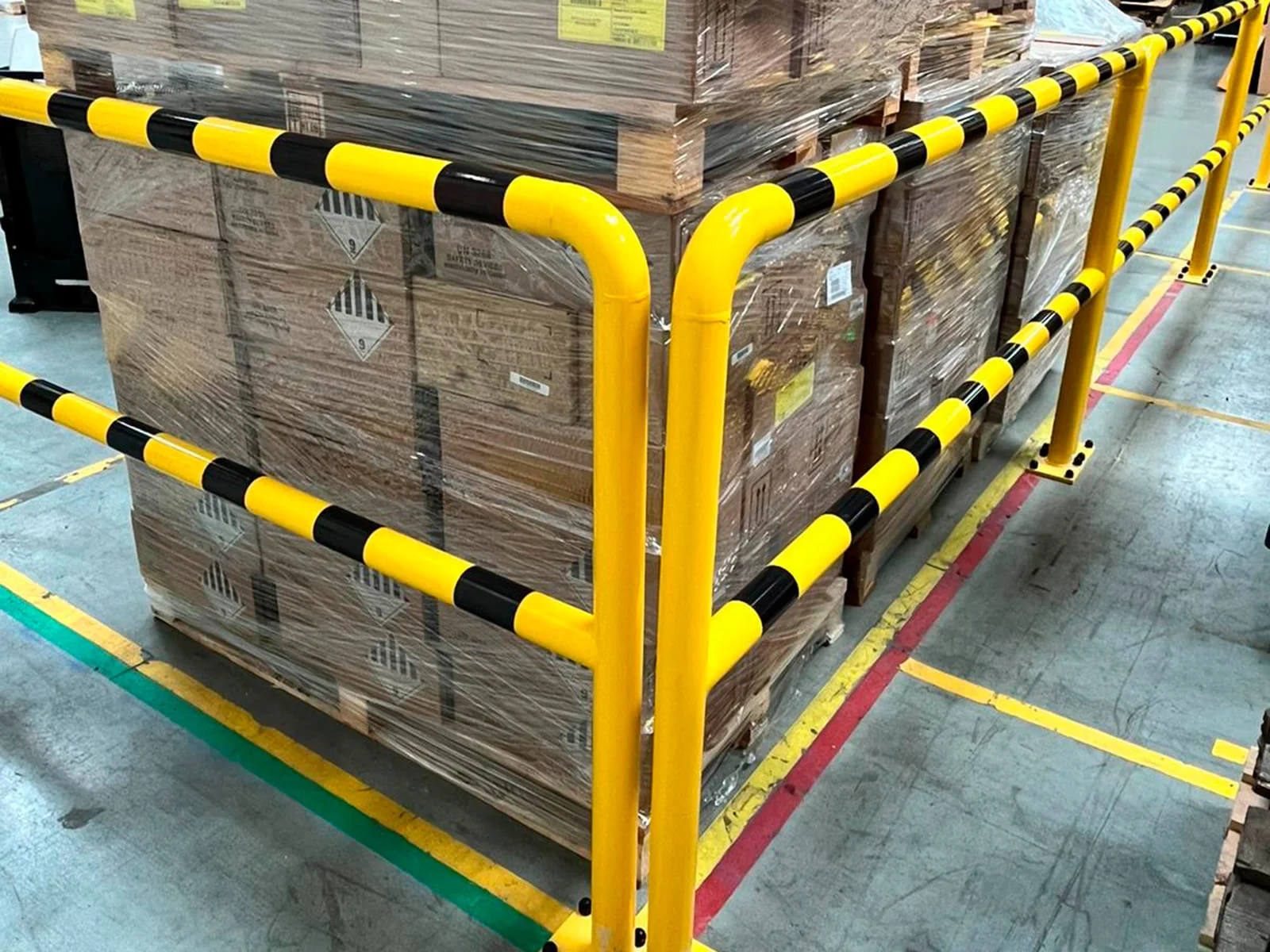What types of safety barriers are there for warehouse equipment?
Industrial bumpers are an integral part of the equipment of all types of warehouses, unloading zones, production halls and parking lots.
Protection of infrastructure and equipment against damage as a result of impacts, both during the transport of goods and during their storage, is an invaluable advantage of such a solution. They are used in various types of industrial and warehouse plants, but also in sea transport and airports. Knowing the types of fenders is essential to choosing the best solution for a given situation.
Rubber bumpers. Rubber bumpers are the most common type of safety barriers. The main advantage of rubber bumpers is their ability to absorb large amounts of energy, minimizing damage to both infrastructure and vehicles. They are resistant to weather conditions, have a long service life and are relatively cheap to produce.
Metal bumpers. Metal bumpers are another type of safety barriers. They are able to withstand much greater loads than their rubber counterparts, but they do not absorb as much energy, which may lead to greater damage to vehicles. Metal bumpers are most often used in places where there is a high risk of impact, for example near industrial machinery.

Polyurethane bumpers. Polyurethane bumpers are characterized by a high level of resistance to wear and to the effects of oils, fats and other chemical products such as resin floors. They are extremely durable and long-lasting, and are additionally characterized by a high degree of impact absorption.
Plastic bumpers. Plastic bumpers are light and highly resistant to impacts. They are used primarily where the priority is to minimize the risk of damage to equipment or vehicles.
Magnetic bumpers. This type of safety barriers is used primarily in maritime transport. They are used to protect ships from damage while mooring. Thanks to the use of magnets, these types of fenders can be easily moved and adapted to various types of ships.
To choose appropriate safety barriers, it is worth taking into account the type of facility, its type and operating characteristics. An important aspect is also the frequency and the force of impacts to which a given space will be exposed. This is the only way to ensure effective protection of both infrastructure and equipment.

Are there any regulations in Europe regarding safety barriers?
Industrial bumpers play a key role in the industrial, construction and transport sectors, providing reliable protection of facilities, equipment and personnel against unintentional damage.
They provide effective protection against various types of damage, from minor mechanical damage to serious collisions. Safety barriers are used in many aspects; from protecting industrial equipment, through securing warehouse structures, to protecting public spaces. But what regulations and standards apply in Europe regarding industrial fenders?
Generally speaking, safety barriers in Europe are regulated by many different directives and standards, which depend on their application. For example, those used in the transport sector must, in accordance with European Commission Regulation (EC) No. 2006/42/EC, meet detailed safety and health requirements. These standards cover requirements for the construction, installation, maintenance and inspection of barriers.
Similarly, bumpers used in construction must meet the EN 1991-1-7 standard, which concerns the impact on structures. Safety and environmental standards apply to fenders that are installed in public places.

It is also important to remember that each country in Europe may have additional regulations and standards that regulate the use of safety barriers. Some countries may require that bumpers be made of specific materials, have specific sizes or be installed in a specific way.
For example, in Poland, safety barriers should meet the requirements of the industrial standards PN-EN 1991-1-7 and PN-EN 1991-1-1, which specify the requirements for self-loads, operational loads and requirements for impact for structures.
These regulations are intended to ensure protection for people, property and the environment. Without them, we would be much more exposed to the risk of accidents and damage in public places, on industrial concrete floors and in warehouses.
If you have any doubts about the regulation of safety barriers, it is always a good idea to consult with an expert in the field. Not only will this help ensure that your bumpers are safe and legal, but it can also help ensure their longevity and effectiveness in protecting against damage.




